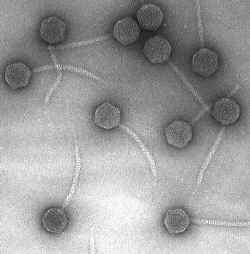Internet Plagues Spread Rapidly

If there’s an outbreak of the flu in your city, you can count on the Centers for Disease Control for help, but if it’s the “I Love You” bug, forget it. That’s because viruses spread differently on the internet than they do in the real world, according to a paper in the 2 April PRL. While a biological disease can only spread from person to person, a digital virus can reach many computers simultaneously from a single server. This difference in transmission makes computer viruses all but impossible to eliminate, according to the authors, but the models they describe may lead to better strategies for protecting the electronic world.
Normally, the prevalence of a disease depends upon its spreading rate relative to the epidemic threshold of a population. If the disease can spread at a rate above that threshold, it will survive, but if it cannot, it will die out. The flu spreads easily enough to keep a significant percentage of Americans constantly infected, but salmonella, transmitted solely through contaminated meat, exists only in isolated outbreaks.
Computer viruses don’t act this way; they can persist at nearly undetectable levels for very long periods of time without dying out entirely. This unusual behavior makes internet outbreaks difficult to predict and control. Romulado Pastor-Satorras of the Catalonian Polytechnic University in Spain and Alessandro Vespignani of the Abdus Salam International Center for Theoretical Physics in Italy suggest a new model that explains how computer viruses survive.
In traditional epidemic models, each human has a small, fixed number of connections to others, according to Pastor-Satorras. But on the internet, desktop PC’s have only one connection, while large government servers have many. So Pastor-Satorras and Vespignani varied the number of connections held by each computer, to better mimic the virtual world, where PCs, local network hubs, and large routers have radically different levels of connectivity.
Their findings, which match trends in data collected by a computer virus tracking organization, were surprising. A virus can spread so easily inside the highly connected internet that there is no threshold below which it will die out. This model also makes an unsettling prediction: A long-forgotten virus hidden in a poorly connected PC can suddenly reemerge if it reaches a major server.
“These kinds of simulation models can tell us interesting things,” says Mark Newman, an expert in complex systems at the Santa Fe Institute. But, Newman adds, they are only a rough approximation of how the internet really works. Still, Pastor-Satorras and Vespignani believe their model provides new insight into how computer viruses spread, and they are now working on immunization techniques that they hope will keep the digital world safe from virtual scourges.
Geoff Brumfiel


